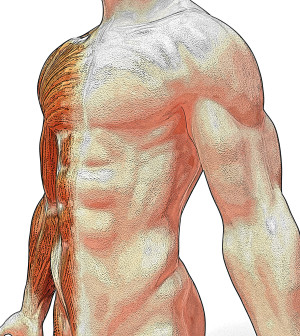- Skip Storing This Everyday Product in the Fridge Door
- Green Tea + B3 Pairing May Boost Brain Health
- Navigating Your Midlife Crisis: Embracing New Possibilities
- City Raccoons Showing Signs of Domestication
- Mapping the Exposome: Science Broadens Focus to Environmental Disease Triggers
- One Week Less on Social Media Linked to Better Mental Health
- Your Brain Changes in Stages as You Age, Study Finds
- Some Suicide Victims Show No Typical Warning Signs, Study Finds
- ByHeart Formula Faces Lawsuits After Babies Sickened With Botulism
- Switch to Vegan Diet Could Cut Your Greenhouse Gas Emissions in Half
Anxiety Linked to a Need for More Personal Space


THURSDAY, Aug. 29It might be a good idea to back off a bit when dealing with people who suffer from anxiety, according to a new study, because the disorder seems to affect the need for more personal space surrounding the body, also called “peripersonal space.”
British researchers found that people with anxiety perceive threats as closer, compared with those who are not anxious. They said their findings could be used to link defensive behavior to levels of anxiety, particularly among those with risky jobs, such as firefighters and police officers.
In conducting the study, Dr. Chiara Sambo and Dr. Giandomenico Iannetti, from University College London, recruited 15 people ranging in age from 20 to 37 and gave them a test to rate their level of anxiety in certain situations.
In addition, the researchers applied an electrical stimulus to a nerve in each participants’ hand, which caused them to blink. This hand-blink reflex, which is not controlled by the brain, was monitored as the participants held their hand at four different distances from their face: ranging from about 2 inches to nearly 2 feet. By measuring the strength of their reflex, the investigators determined how dangerous the participants viewed each stimulus.
The study, published in the Aug. 27 issue of the Journal of Neuroscience, revealed that those who scored higher on the anxiety test reacted more dramatically to stimuli about 8 inches from their face compared with those who had lower anxiety scores. People who reacted strongly to the stimuli farther away were classified as having a large “defensive peripersonal space,” the study authors said.
Anxious people viewed threats as closer than those who were not anxious — even if the perceived threats actually were the same distance away, the researchers said. Although the brain does not trigger defensive reactions, the study authors said, it could control their intensity.
“This finding is the first objective measure of the size of the area surrounding the face that each individual considers at high risk, and thus wants to protect through the most effective defensive motor responses,” Iannetti said in a university news release.
More information
The U.S. National Institute of Mental Health has more about anxiety disorders.
Source: HealthDay
Copyright © 2025 HealthDay. All rights reserved.










